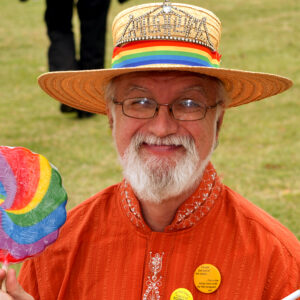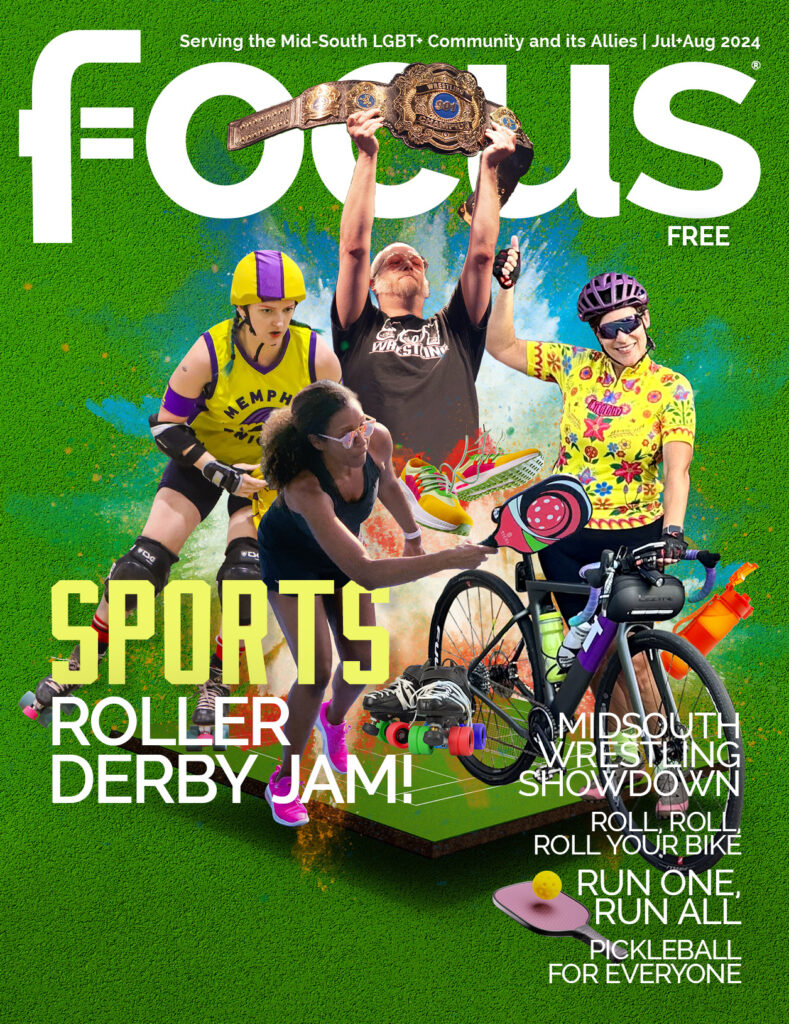by Vincent Astor
In her early days, Memphis was anything but a sleepy river town. I’ve lived part of the LGBT history of the city, and thanks to the work of a 1970s-era local librarian, I’ve uncovered a rich history of an active Memphis gay community that goes as far back as the late 1800s (at least).
My librarian source, who in the mid 1970s had access to the the main library’s history department, wrote under the name Fred Harris. Harris’ research involved combing through much of the microfilm of old Memphis newspapers and uncovered, among other things, the story of Alice Mitchell and Freda Ward (1892) which has previously been published in this magazine. In the mid-1970s, he wrote for Gaiety newspaper, Memphis’ first gay community newspaper. This newspaper may be found in the Memphis and Shelby County Room collection in bound form and electronically through Rhodes College.
In his research, Fred also discovered an 1870 theatrical engagement at Broome’s Variety Theatre, a long-gone downtown location formerly at 37 Jefferson. The theater was also known as Broom’s Opera House. The theatre was popular with acts including minstrel shows, farces and all sorts of entertainment. One act in this particular 1870 engagement was a male impersonator named Marie Hinkle.
According to accounts in the Memphis Public Ledger, Marie had favorites in the female chorus who were rivals for Marie’s affections. So enamored with Marie, the two ladies got into a cat fight over who was to escort Marie to the train station for her next engagement in New York City. The train terminal is long gone, but it was where the Casey Jones historic marker is now on Front Street.

In the Ledger article, the names of the rivals were given merely as Ione and Lizette. During their meeting at the Women’s Entrance (!) to the Overton Hotel (where the Cannon Center is now) a scuffle broke out. Knives were drawn, but the women were separatedbefore too much blood was spilled. Reading this account so many years later, some of it could have been a publicity stunt, but it did make the papers. The fight even involved Dick English, the ‘river editor’ of the Memphis Daily Appeal, an ancestor of today’s Commercial Appeal. English helped to separate the two women before “there would have been murder done.”
According to Daneel Buring’s Lesbian and Gay Memphis: Building Communities Behind the Magnolia Curtain, Marie Hinkle was actually a woman named Annie Hindle, a male impersonator. Hindle performed as a ‘swell’ (an upper-class man who could indulge in a range of leisure activities). She also impersonated ‘fops’. Fop is a term meaning ‘man of fashion’ who overdresses and generally puts on airs. By making fun of that type, Hindle had a great appeal to the working-class men who attended her shows. She was married several times (two men, divorced) and two women. The first died and the last was even interviewed by the press as her “widow.” Annie Hindle was most active in the latter part of the 19th century so it’s possible that she could’ve been the Marie Hinkle who played Memphis. Read more about Hindle at https://dragkinghistory.com/1864-1904-annie-hindle/.
It’s tempting to think that female impersonators lived in the shadows of society. For female impersonator Julian Eltinge, it was quite the opposite. Julian Eltinge was the most famous female impersonator of his day, playing vaudeville and music hall comedy.




With outstanding reviews for performances, his early appearances in New York were in 1905-6. He toured Europe, even performing at a command performance at Windsor Castle for Edward VII. He was known for his quick changes. Variety wrote in September of 1907, “The audience was completely deceived as to Eltinge’s sex until he removed his wig after the second song…his act is far and away above what is described as female impersonation.”
It was always assumed that he was gay, but he went to great lengths to steer away from that association throughout his career. He appeared in several films, in his usual mode of having to disguise himself for some reason as a woman and then reveal his true gender at the end. In his only sound film, “Maid To Order” (1931) he plays a private detective who disguises himself as a French singer, Lottie Lorraine, performing at a nightclub where diamonds are being smuggled. It is a forerunner of “Some Like It Hot” and “Tootsie” in which Lottie had to room with another female singer creating embarrassing and farcical situations. He lived a double life as a very successful performer who was famous for his female roles but maintained a very masculine persona (almost too much) off stage.
Part of Eltinge’s legacy remains today in Manhattan. The Empire Theatre on 42nd St. in NYC, was originally the Eltinge Theatre. It was built in 1912 and named in Eltinge’s honor (though there is no record of him ever performing there). It was well known as the theater of the Abbott and Costello performances. In 1998, as part of the renewal of 42nd Street, it lifted off its foundation and moved 170 feet to the west where it became the lobby of an AMC movie theater. Eltinge’s name is listed there on a plaque facing the street. It is said that the images in the plaster and murals which still may be seen are of Eltinge in costume. Read more about the theater at http://cinematreasures.org/theaters/255. Read more of Eltinge’s biography at https://legacyprojectchicago.org/person/julian-eltinge.




